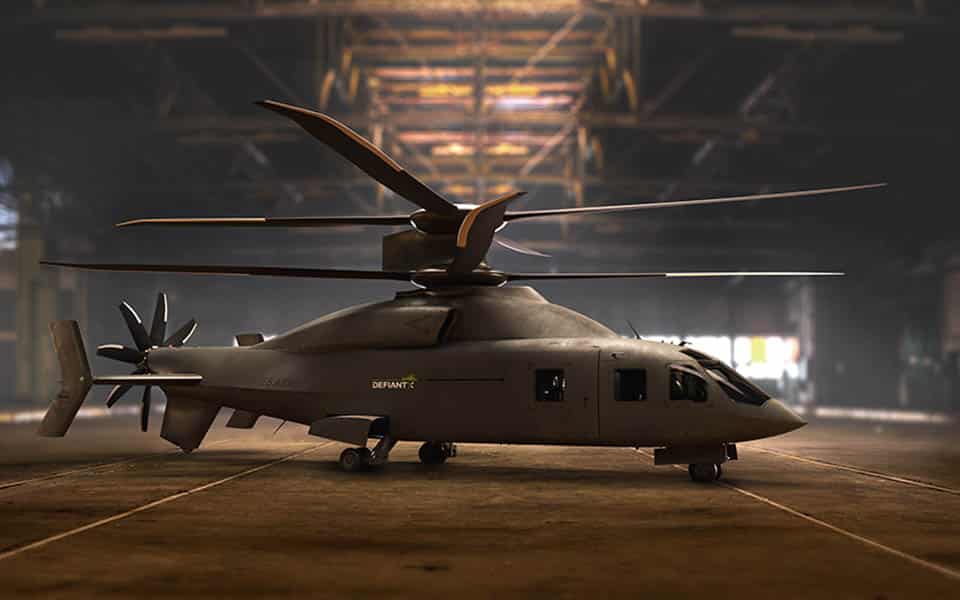Aerospace
Boeing and Sikorsky are protesting the Army’s FLRAA decision to use the Bell V-280 Tiltrotor

ARLINGTON, Va., Dec. 28, 2022 — Sikorsky, a Lockheed Martin company, filed a formal protest today asking the U.S. Government Accountability Office (GAO) to review the U.S. Army’s decision on the Future Long-Range Assault Aircraft (FLRAA) contract.
Meet the Bell 360, the latest rival to the Sikorsky Raider X.(Opens in a new browser tab)
Boeing supports the protest filed by our Team DEFIANT partner, asking the GAO to review the Army’s decision.
Based on a thorough review of the information and feedback provided by the Army, Lockheed Martin Sikorsky, on behalf of Team DEFIANT, is challenging the FLRAA decision. The data and discussions lead us to believe the proposals were not consistently evaluated to deliver the best value in the interest of the Army, our Soldiers and American taxpayers. The critical importance of the FLRAA mission to the Army and our nation requires the most capable, affordable, and lowest-risk solution. We remain confident DEFIANT X is the transformational aircraft the Army requires to accomplish its complex missions today and well into the future.
The Army’s decision to adopt the Bell V-280 Tiltrotor, which will eventually replace the Black Hawk, has drawn criticism from Boeing and Sikorsky.
The Bell V-280 Valor and the Sikorsky-Boeing SB>1 DEFIANT aircraft are being developed for the U.S. military as part of the Future Long-Range Assault Aircraft program. Tiltrotor aircraft are able to take off and land vertically like helicopters, but also have the ability to tilt their rotors to fly horizontally like fixed-wing aircraft.
The Bell V-280 Valor is being developed by Bell Textron Inc., a major American aerospace manufacturer, as a joint multirole aircraft for the U.S. Army. It is designed to be able to transport troops and cargo, as well as conduct reconnaissance and other missions. The V-280 has a cruising speed of 280 knots (320 mph) and a range of over 2,100 nautical miles (2,400 miles). It is expected to be operational by the mid-2020s.
Defiant On March 21, 2019, it had its maiden flight. It is a compound helicopter with stiff coaxial rotors and two Honeywell T55 turboshaft engines. This helicopter is a little bit taller than the present Black Hawk and lacks a tail rotor, but it still has a suitable engine that provides the aircraft with forward power, allowing it to reach a top speed of 460 km/h.
The SB>1 DEFIANT is being developed by Sikorsky, a subsidiary of Lockheed Martin, and Boeing as a high-speed, long-range helicopter for the U.S. Army. It is designed to be able to reach speeds of up to 280 knots (320 mph) and has a range of over 1,000 nautical miles (1,150 miles).
Both the V-280 and the DEFIANT are being developed as part of the U.S. military’s efforts to modernize its vertical lift capabilities and meet the evolving needs of future conflicts. They are expected to offer significant improvements in speed, range, and payload capacity over current helicopter platforms.
The army’s decision to select the V280 aircraft over the Defiant has upset Boeing and Sikorsky. The decision to test the helicopter for taking up the US Army is currently being challenged. Both aircraft have unique capabilities, with the Defiant helicopter being similar to that even while the V280 is a tilt-rotor that provides vertical lift and forward motions.

Aerospace
When Ratan Tata was denied entry to the airfield at the Aero India show, he waited

During our visit to Aero India 2019, we had the unexpected opportunity to see Ratan Tata at the event, which was a thrilling moment for us. However, there was a surprising hiccup when the security staff didn’t allow him to enter due to a lack of a security pass.
Despite this, he remained calm and patiently waited for about 20 minutes until a member of the Tata team brought him the required pass, after which he calmly proceeded inside. It was a humbling sight, showcasing his composed demeanor even in such situations.
Ratan Tata ji is not only a renowned industrialist but also a trained pilot, holding a pilot’s license. In 2007, he became the first Indian civilian to fly the F-16 Falcon during the Aero India show in Bangalore—a proud moment for the nation.
His passion for aviation extended beyond flying, as he played a key role in shaping India’s aerospace industry. Under his leadership, Tata ventured into manufacturing and maintaining aerospace components while upholding its legacy of quality. Notably, Tata’s collaboration with Airbus to develop and manufacture the C295 aircraft is a testament to its growing influence in the sector.
-

 Aviation2 months ago
Aviation2 months agoMicrosoft Flight Simulator Raises $3 Million to Bring Back the An-225 Mriya
-

 Airlines2 months ago
Airlines2 months agoQatar Citizens Can Travel to the United States Without a Visa
-

 Aviation2 months ago
Aviation2 months agoQatar Airways bans these new Electronic Devices on plane
-

 Airlines2 months ago
Airlines2 months agoJapan Airlines Rolls Out Free Domestic Flights to International Passengers
-

 Travel2 months ago
Travel2 months agoQatar Airways Launches Four Additional Flights from Amsterdam
-

 Defence2 months ago
Defence2 months agoWhich Country Has the Largest Fleet of Fighter Aircraft?
-

 Airport2 months ago
Airport2 months agoWestern Sydney Airport Welcomes Its First Plane After 6 Years of construction
-

 Airlines4 days ago
Airlines4 days agoDAMAC Air: Dubai’s New Luxury Airline Offers Free Flights for Registration








